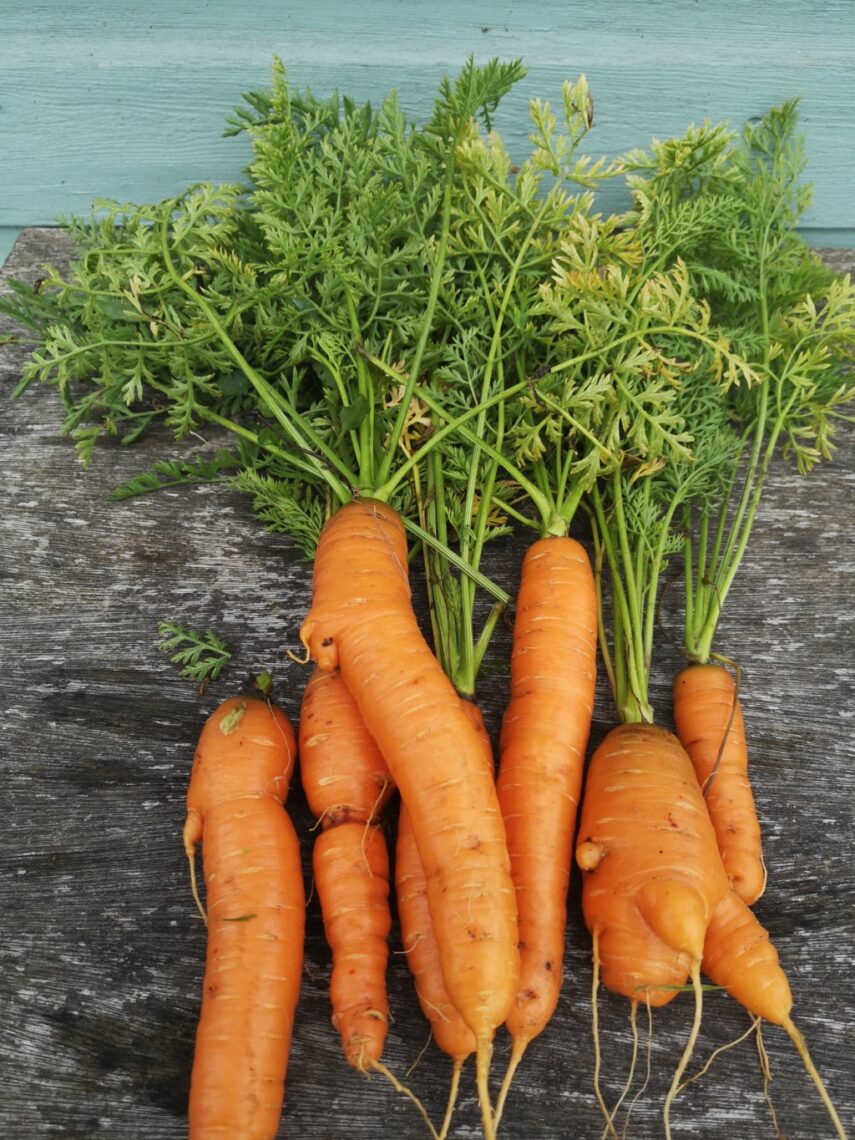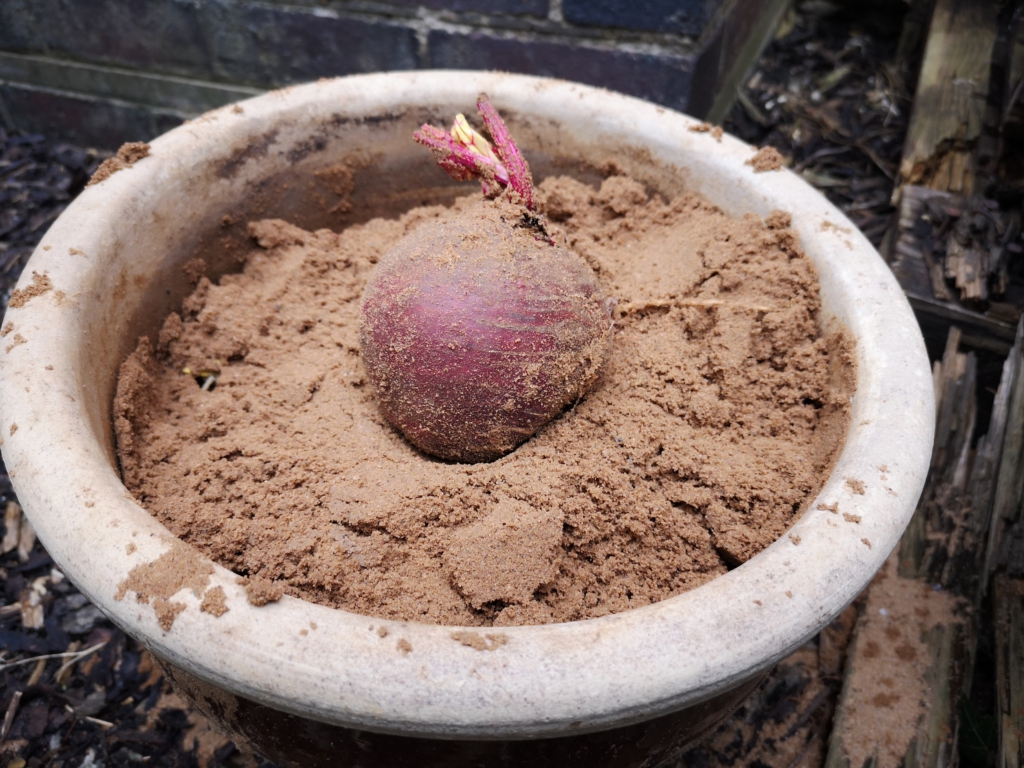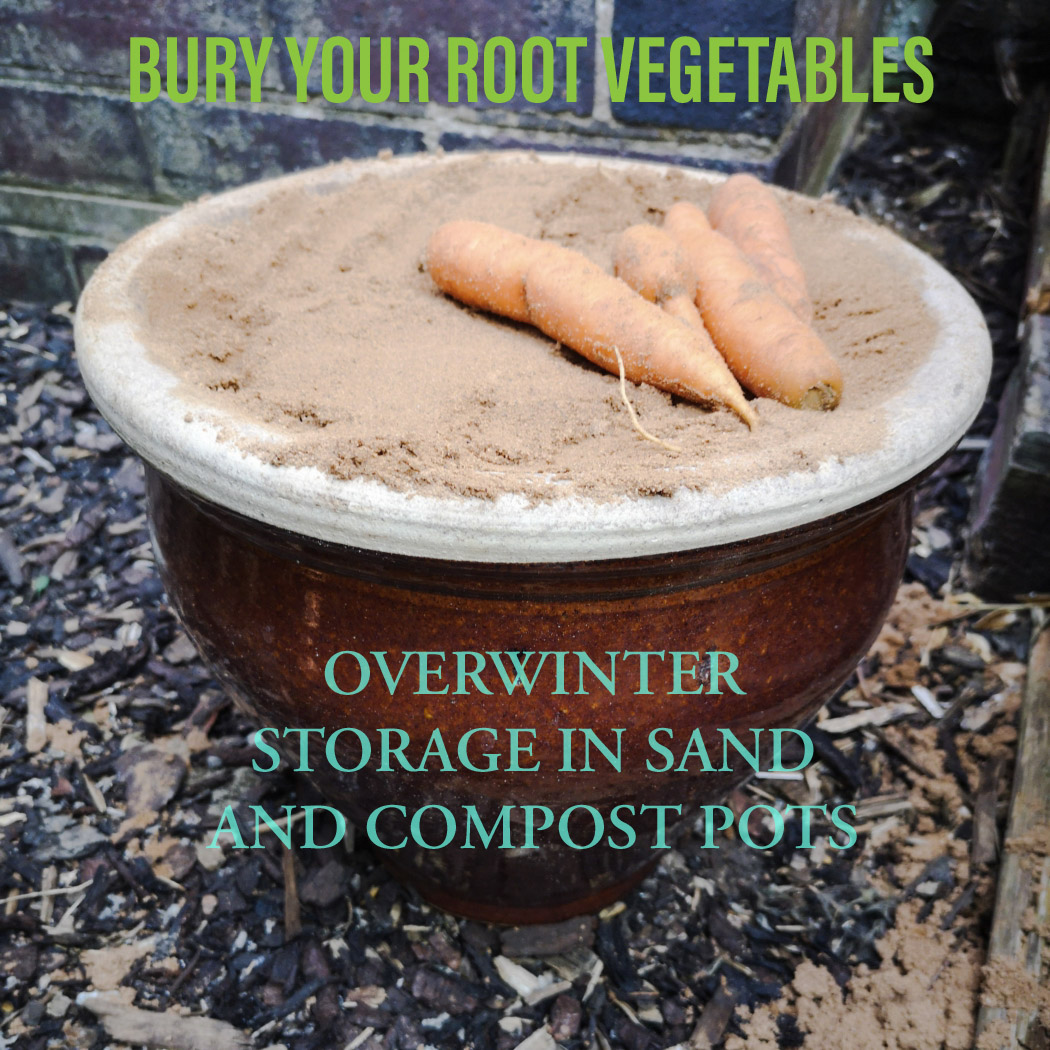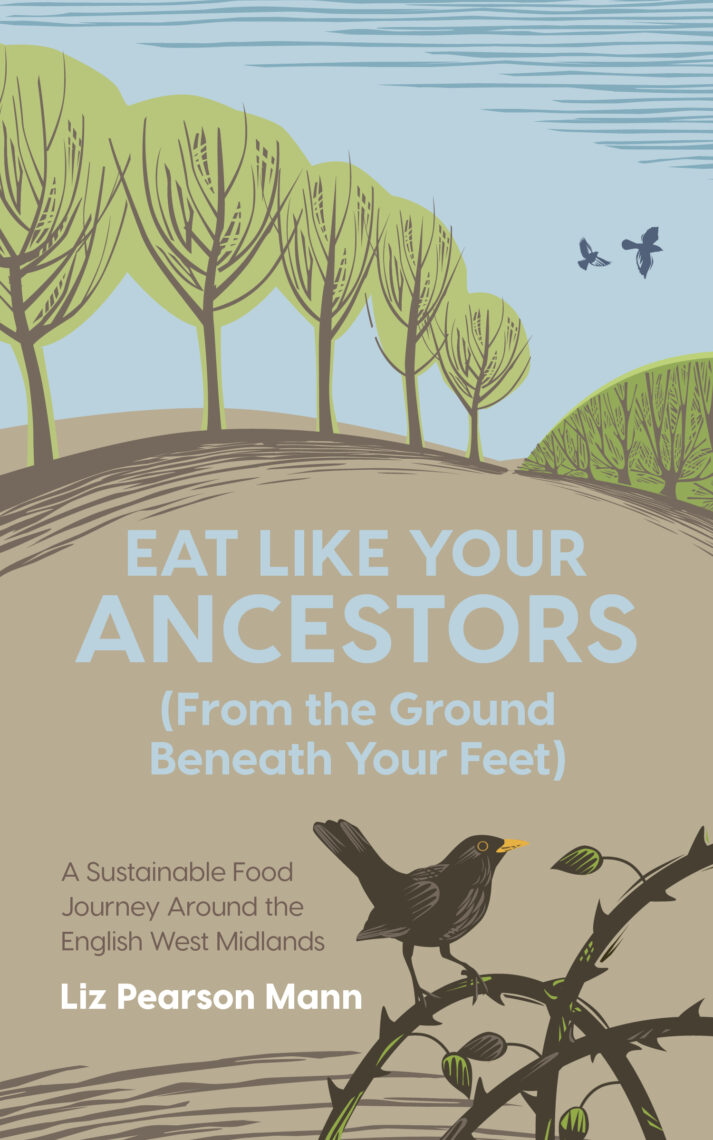I bury my root vegetables in sand and compost. No longer do they wilt and wrinkle in a basket in the cupboard, or in the fridge, if I can’t use them quick enough. Would you bury your root vegetables? You may know that you can keep root vegetables in sand or peat (or compost) over winter. You can go for root cellar storage: keep your root vegetables in sand or peat in crates in a cellar or a cool, dark cupboard.
We have no cellar, and although we have an under stairs pantry, I’m keeping mine in sand and compost outside. Because, why not? Or why take up space indoors when they clearly do well outdoors?
It’s worth thinking about whether you grow your own, or not. It’s Zero Waste Week, and the subject is food waste, so why not try a different way to avoid food waste? Think of this as extending your larder outdoors. This is part of my focus on traditional food storage.
For a couple of years running I’ve sown carrots, at the end of the summer, in grow bags or big pots in the backyard after I’ve harvested potatoes and beans. They’re extra crops, alongside those grown on our allotment. I’ve tended to forget about them, though, because I haven’t had much faith that a late sowing would produce good results. But low and behold, I go to re-plant my pots and find perfectly well preserved carrots in the compost. The tops have died down, and because of my inattention over winter, they’re furthest from my mind.

Carrots on the allotment survive well, left in the ground for a while. But as winter progresses they crack, insects and slugs tunnel in, and they set up home. This year, I’m going to pull the carrots, beetroot, turnips and swede earlier, and store them in sand pots and potato sacks.

More Whys and Means For Burying Your Vegetables
Buy Then Bury Your Vegetables
You may think ‘But I don’t grow root vegetables!’ It may still be worth thinking about burying your veg though. If you have limited storage indoors, you could think of this as your outdoor larder. One pot would probably do if you buy small amounts frequently. If you like to preserve (eg pickle your beetroot) and/or buy market or farmshop produce when it’s available, this allows you to bulk-buy local produce and store until you can use it.
Our house is set back from the street with most of the space at the front, so at the moment, I’m storing carrots and beetroot in the shade of the house. But for winter I’ll move our storage round to our sheltered, hard-surface backyard. It’s a sun trap in summer and warmer in the winter than the front garden.
You’ll need to keep your overwinter storage frost-free. You may find frost on the outside of the pots at times, but I’ve noticed our buried carrots come through the winter well. So presumably the compost has insulated them, and the sheltered spot helps. Choose your spot!
You’ll need to cut the tops off to stop them from growing new shoots. I’ve sometimes swiftly buried my roots after coming back from the allotment. I’ve gone to dig them out, to cut off the tops, and they’re already sending out new shoots. At this time of year (summer) that’s more than likely. I now cut the tops off straight away.
I gather it’s best to check on your storage intermittently over winter. One bad root, and the others could all rot. I’ve never had this problem with carrots in compost outdoors though. I’ll still check, but I’m fairly confident about my outdoor storage.

Clear the Ground; Bury Your Vegetables
Next year, I intend to take this further and pull root vegetables as soon they’re fully grown, to get more efficient at successional sowing. Grow & re-sow. Successional sowing makes good use of limited space. I’m often hesitant to pick the roots if I don’t think I’m going to cook with them immediately. But sand and compost pots could be my friend.
So, if you have an allotment or a vegetable patch, you could harvest, bury your vegetables, then successional sow before autumn.
Bury Your Vegetables In a Clamp
This is probably of more interest to growers, and those with more outdoor space. You can also store root vegetables in clamps. Dig a hole dug into the ground, insulate with straw, hay or clay, and you have overwinter storage. Or you could go for an above ground clamp: mound the vegetables up, insulate, and leave a straw-filled hole at the top as a vent. We’ve not yet tried storing in clamps, but there’s always another method to try.
Here are some instructions if you want to know how to store root vegetables in a clamp, try this from Pocket Farm.
This might sound kooky, but it’s food storage BFF (Before the Fridge Freezer). We’ve been burying our produce for thousands of years. I’m more familiar with buried grain though.
Prehistoric clamps
It’s a strange way to earn a living, but I spend time at a microscope looking at food and farming residues we’ve recovered from archaeological sites. Some of those residues are burnt grain found in prehistoric grain storage pits. So it’s not only root vegetables that store well underground.
Usually, what we’re looking at is burnt grain stuck to the sides of these pits. We think people, in the past, have set fire to the insides of emptied pits to cleanse the soil of moulds and fungi. A site to the south of Worcester where I live (now Clifton Quarry, Worcestershire), was peppered with these pits which were dug in the early to middle Iron Age, around 2300 to over 2500 years ago. Not far away, I looked at grain from similar pits at Saxon’s Lode Farm, Ryall Quarry that held litres of burnt grain and chaff.
I’ve never found anything like it. Their dates straddle the end of the Iron Age and the beginning of Roman times. It looks like the grain had caught fire accidentally. Or could it be that the pits were deliberately burnt in the face of a wave of invading Romans? Who knows, but we come across rare and unusual finds that date to these times.
I just thought I’d add that, as an interesting aside.
Pickles In a Ploughman’s
Back to the present. What could be better than pickled beetroot and a wedge of aged, matured cheddar? No wonder root vegetables, in northern climes, have always been an accompaniment to nutrient dense food which always stores well. Root vegetables, cheese and cured meats: tilled field and pasture. A vital combination.
If you think you might get the bug for growing your own, check out The Small Productive Garden: Six Plus Points, or Edible Perennials for Low Maintenance Allotments: Five Plus Points.
If you liked this post, you might want to take a look at my book about sustainable food. It’s centered in a journey around where I live, but it’s relevant anywhere. And, it’s out now…..


